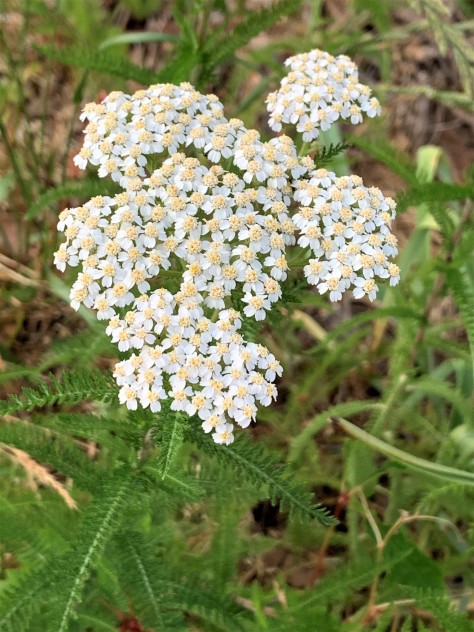Elderberry (Sambucus canadensis) and common yarrow (Achillea borealis) are in bloom right now around here. Although one is a woody shrub, and the other is a forb (herbaceous flowering plant), they have superficially similar flowering habits. It’s a good opportunity to have a closer look at inflorescence (cluster of flowers on the same stem) structure!
Here’s a quick dive:

Elderberries belong to the Viburnaceae family, according to the latest Flora of the Southern and Mid-Atlantic States. (Some older sources list it as Adoxaceae.) Common elderberry (S. canadensis) can be recognized by its opposite pinnately-compound leaves, with toothed leaflets, and its flat-topped terminal compound CYMES of 5-parted white flowers. Phew! CYMES of flowers are determinate – the individual flowers mature and start blooming from the center of the cluster OUTWARDS.

Yarrow belongs to Anthemideae – the chamomile! tribe, within the HUGE aster family, Asteraceae. Common yarrow, (A. borealis) can be recognized by its simple but finely-dissected feathery alternate leaves, and its flat-topped terminal CORYMB of white compound (think “dandelion/sunflower-ish”) flower heads, each composed of ray and disk florets. Another phew. CORYMBS of flowers are indeterminate – the individual flowers mature and start blooming from the edges of the cluster INWARDS.
Ok, if you’ve made it this far, your reward is…
PAINTED BUNTINGS. You’re welcome.



